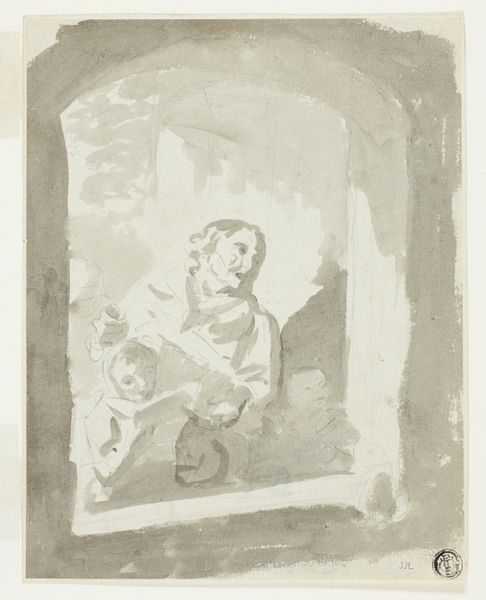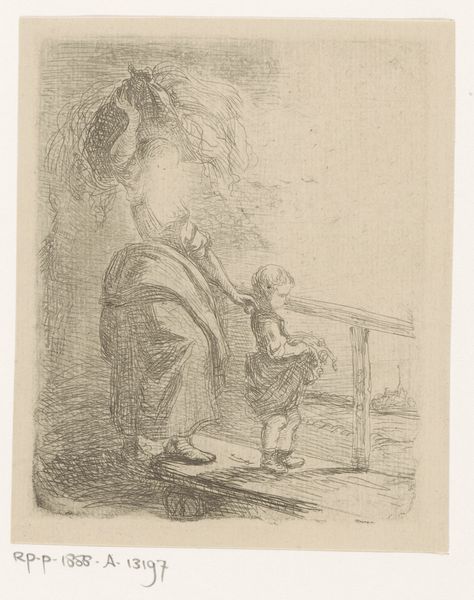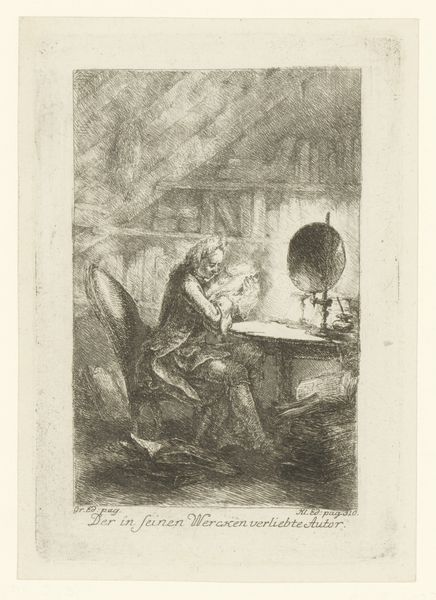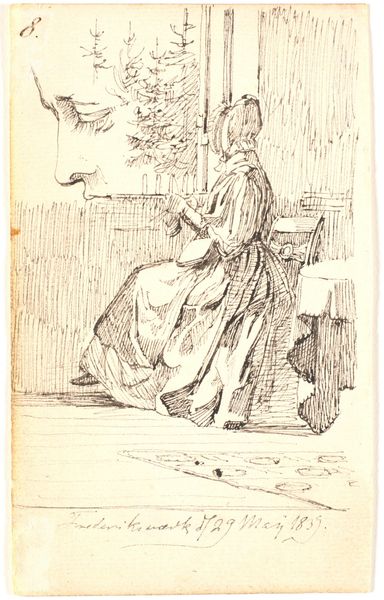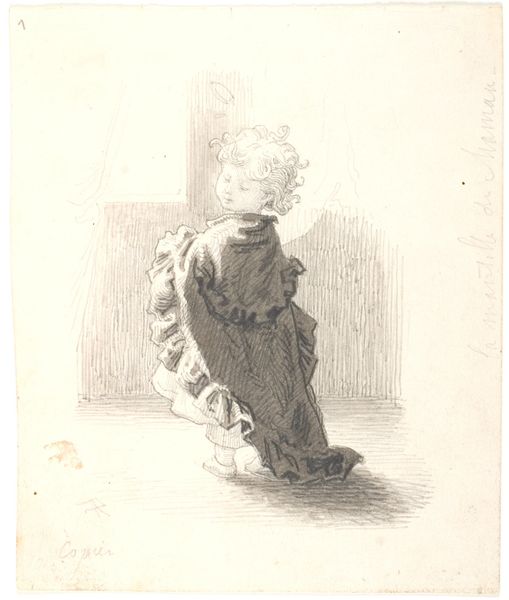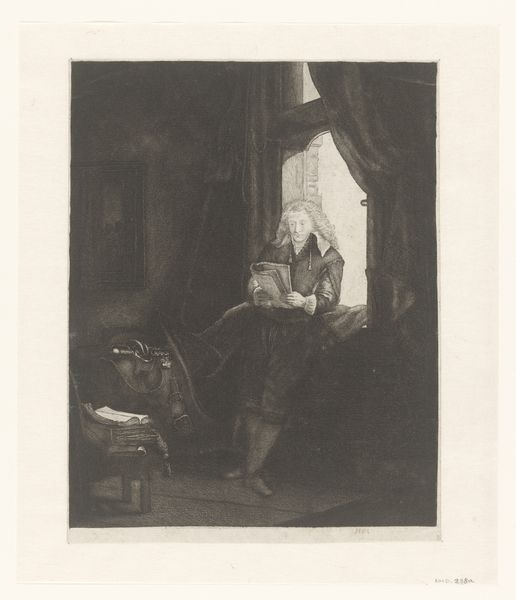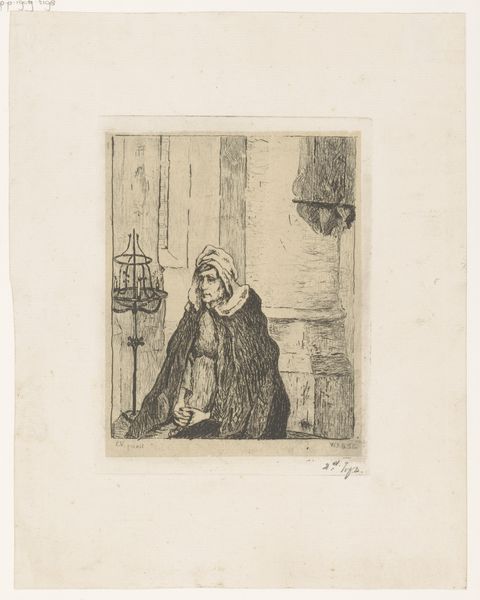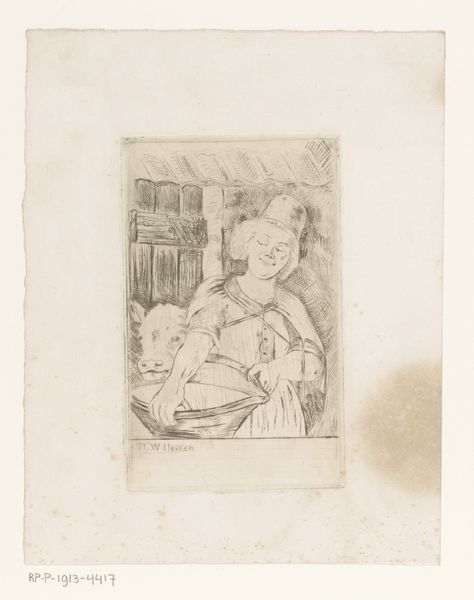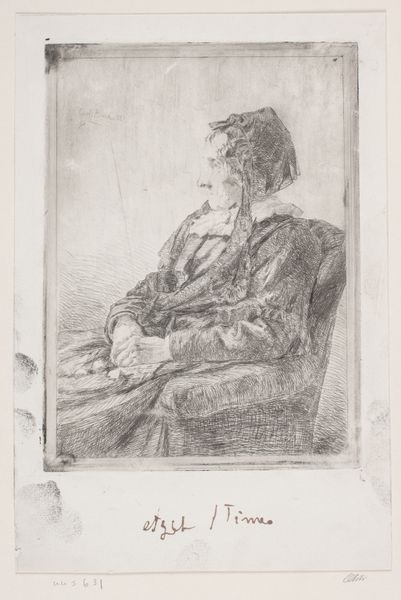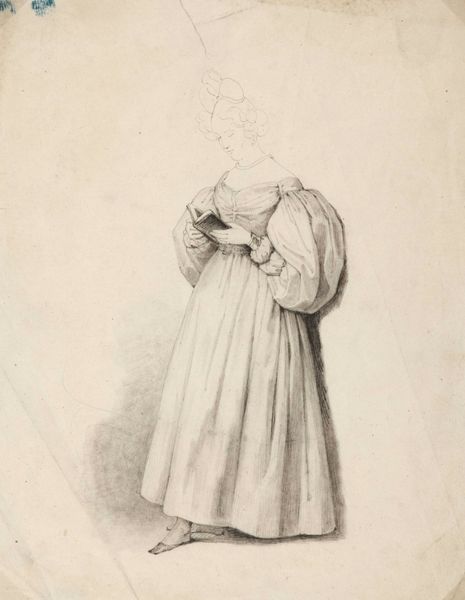
Portrait of a Man in an Arm Chair, from Collection d'imitations de Dessins d'après les Principaux Maîtres Hollandais et Flamands Possibly 1821
0:00
0:00
drawing, print, etching, paper
#
portrait
#
drawing
# print
#
etching
#
paper
#
genre-painting
Dimensions: 372 × 270 mm (image); 388 × 285 mm (sheet); 510 × 394 mm (secondary support)
Copyright: Public Domain
Curator: This is an etching entitled "Portrait of a Man in an Arm Chair," possibly created around 1821, from Christian Josi's *Collection d'imitations de Dessins d'après les Principaux Maîtres Hollandais et Flamands.* Editor: It's immediately striking how unfinished it appears. The figure seems almost ghostly, particularly the head, but there's such clear attention given to the textures of the clothing, creating an interesting tension. Curator: That tension, I think, speaks to the historical moment. Etchings like this allowed for wider distribution of artworks and catered to a growing interest in art collecting amongst a broader public. Prints facilitated visual literacy, informing aesthetic trends beyond the elite. Editor: From my perspective, it underscores the significance of the printing process. The materials used, the labor involved in creating the etching plate, and then the final print on paper, are central to understanding the work. Each pull from the plate would be slightly different; each print its own unique artifact. What kind of paper was being used at the time for these reproduction etchings? How did the availability of materials influence their creation? Curator: That's a fascinating point. The selection of paper, the inks – these were all elements that spoke to class and the intended market. And to consider its circulation within collections; these were valuable learning and artistic resources. Artists and collectors utilized these in a time before photography was commonplace, really changing how they could study works beyond their locality. Editor: And considering the implications of reproduction, who gets to own and experience art? How did this particular print, and others like it, challenge conventional hierarchies within the art world by bringing copies of old masters' works to a new audience through these collections of imitation? Curator: Exactly. What was gained and lost in translation? By actively re-circulating imagery through these kinds of reproduction methods and publications? Editor: The material transformation of a drawing or painting into an etching necessarily shifts the power dynamics surrounding art consumption and artistic education. Curator: So true, this piece provides a real portal to the history of art and its impact. Editor: Agreed, seeing its impact allows us to see how new art continues to redefine that history through ever-changing reproduction.
Comments
No comments
Be the first to comment and join the conversation on the ultimate creative platform.
